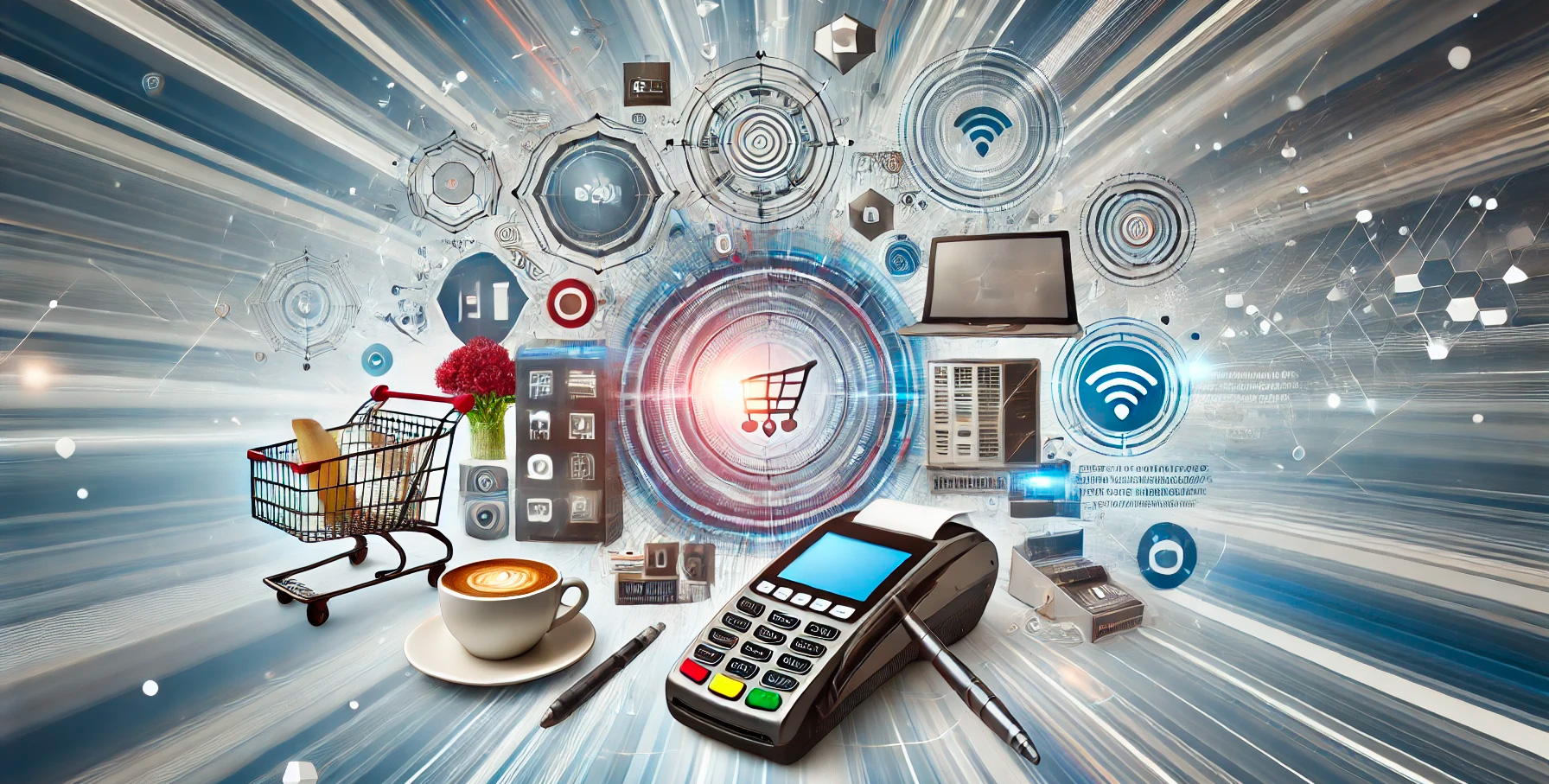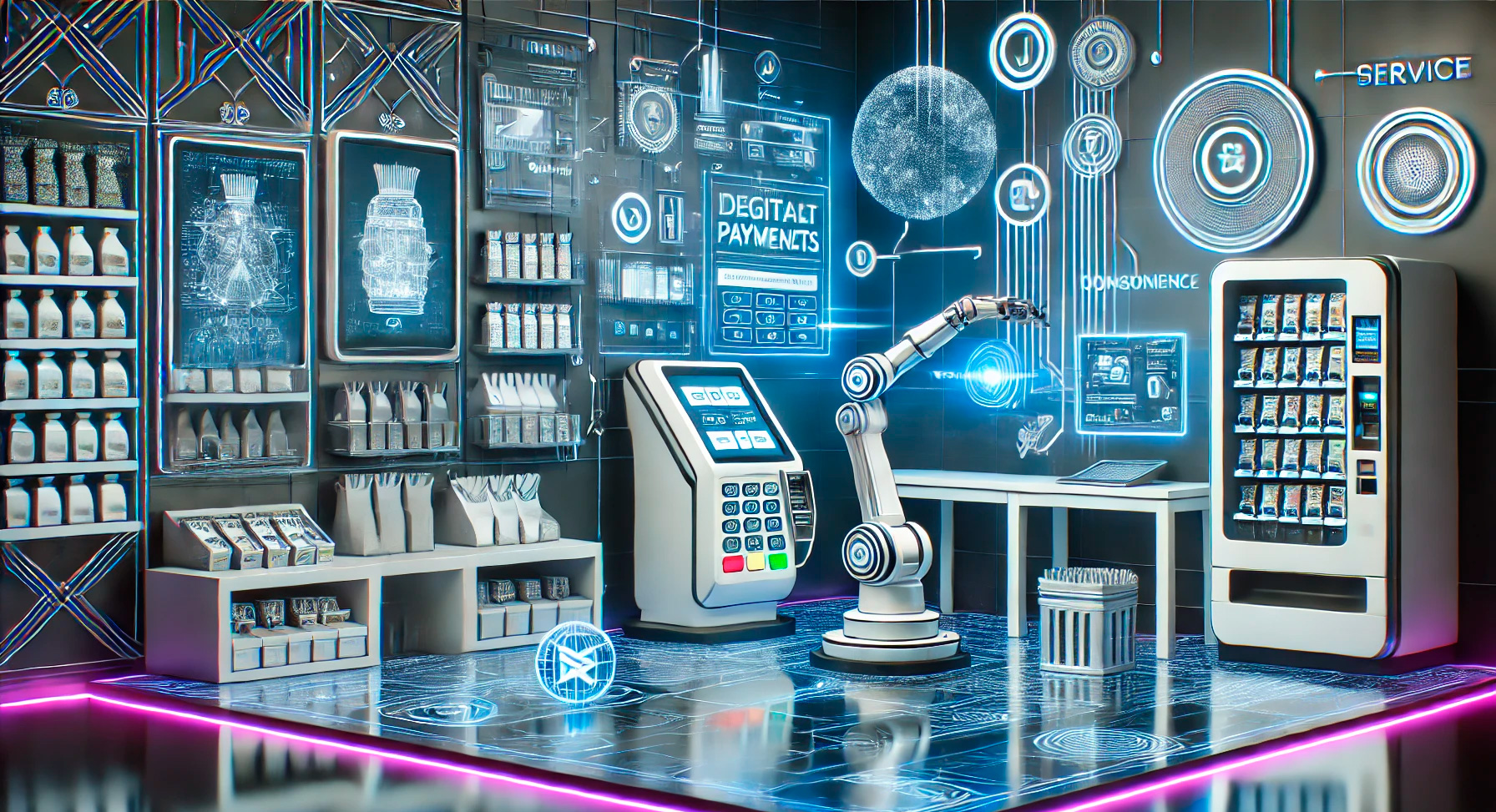Technology and IT Support for Stores, Supermarkets, Cafes, and Other Businesses: How to Optimize Operations with Modern Solutions

In today’s fast-paced business environment, technology is no longer a luxury—it’s a necessity. From retail stores and supermarkets to cafes and small businesses, the integration of modern IT solutions can significantly enhance operational efficiency and improve customer experiences. In this article, I’ll dive into how IT support plays a crucial role in implementing and optimizing the technologies that drive success for businesses of all sizes. We’ll explore key solutions such as CRM systems, websites, automated purchasing, and cashback applications, and how these tools offer a competitive edge while fostering better customer engagement.
The Role of Technology in Modern Business
For any business—whether it’s a large supermarket chain or a local coffee shop—technology has become an integral part of day-to-day operations. With consumer expectations constantly evolving, businesses must adopt solutions that not only streamline their processes but also enhance customer interaction and satisfaction. In fact, implementing the right technological tools can be the difference between staying competitive and being left behind.
As a business owner, managing multiple aspects of your business, from inventory to customer relations, can be overwhelming. This is where IT support comes into play. A dedicated IT team ensures that the technologies you adopt are not only integrated seamlessly but also optimized for maximum efficiency. Whether it’s troubleshooting issues, maintaining security, or automating processes, IT professionals help keep the gears turning smoothly.
Let’s take a closer look at some of the most impactful technologies for businesses and how IT support enhances their implementation.
1. CRM Systems (Customer Relationship Management)
Managing customer interactions and data is critical for fostering long-term relationships, and CRM systems are the tools that make this possible. Whether you’re running a small boutique or a coffee chain, CRM systems offer a centralized platform for tracking customer behavior, preferences, and purchasing history.
What It Is:
A CRM system is designed to store and organize customer data, making it easier for businesses to manage relationships with existing and potential customers. It can track interactions, automate follow-ups, and offer insights into customer preferences and trends.
How It Helps:
With the right CRM in place, businesses can personalize their customer service efforts, develop targeted marketing campaigns, and ultimately build stronger customer loyalty. For example, a coffee shop can use its CRM system to track regular customers’ favorite orders and send personalized offers or coupons to keep them coming back.
Examples of CRM in Action:
- A café uses its CRM to remind baristas of a regular customer’s favorite drink when they walk in, creating a personalized experience.
- A retail store tracks customers’ past purchases and uses that data to send personalized marketing emails or SMS messages with special promotions.
- A restaurant chain uses CRM data to run loyalty programs, offering rewards to customers who frequently dine in or order online.
2. Websites and Online Platforms
In today’s digital age, having an effective website is not just an option—it’s a requirement. Your business’s website serves as a virtual storefront, often being the first point of contact between you and potential customers. A well-designed, optimized website can help you capture online orders, enable pre-orders or reservations, and automate marketing efforts, making your business more efficient and customer-friendly.
What It Is:
A website is your business’s online presence, allowing you to showcase products, take orders, and interact with customers virtually. Online platforms, including e-commerce sites, booking systems, and content management systems, enhance this digital experience.
How It Helps:
A high-functioning website not only provides customers with essential information but also allows businesses to automate many customer interactions. For example, cafes can enable online table reservations, and retail stores can integrate e-commerce functionality to allow customers to place orders directly from the website.
Examples of Websites in Action:
- A supermarket chain offers an online store with convenient pickup or delivery options, allowing customers to order groceries without stepping into the store.
- A coffee shop integrates a booking system on its website, letting customers reserve tables during busy periods, reducing wait times and improving customer experience.
- A boutique store uses its website to feature limited-time promotions, offering discounts to online customers and driving more traffic to both the physical and virtual stores.

3. Automated Purchases and Self-Service Solutions
Automation has become a game-changer in retail, allowing businesses to streamline purchases, reduce wait times, and ultimately provide a better customer experience. Whether it’s automated checkouts in supermarkets or online ordering with in-store pickup, these solutions are essential for modern businesses.
What It Is:
Automated purchases refer to the integration of self-service checkout systems and online ordering platforms that enable customers to complete transactions without manual intervention. This can range from self-service kiosks to fully automated checkout counters.
How It Helps:
Automation reduces the need for human involvement in routine transactions, making the process faster and more convenient for both customers and staff. In larger stores and supermarkets, self-checkout systems can improve customer flow and reduce long lines, while cafes and smaller stores can benefit from online ordering platforms that simplify transactions and save time.
Examples of Automated Purchases in Action:
- Supermarkets implement self-checkout kiosks, allowing customers to quickly scan and pay for their items without waiting for a cashier.
- Online stores enable automated reordering for frequently purchased items, reducing the hassle for returning customers.
- Restaurants and cafes offer online ordering for pickup, letting customers place their orders ahead of time and avoid waiting in line.
4. Cashback Apps and Loyalty Programs
Customer retention is just as important as customer acquisition, and cashback apps and loyalty programs have proven to be effective tools for building lasting relationships. These technologies allow businesses to incentivize repeat purchases by offering rewards that bring customers back time and again.
What It Is:
Cashback apps allow customers to earn a percentage of their spending back in the form of rewards, while loyalty programs track customer purchases and offer discounts, free items, or special perks based on their activity.
How It Helps:
By implementing cashback apps and loyalty programs, businesses can build stronger relationships with their customers. These programs give customers an additional incentive to choose your store, coffee shop, or supermarket over competitors. In the long run, this boosts customer retention and encourages repeat business.
Examples of Cashback and Loyalty Programs in Action:
- A café uses a mobile app to offer regular customers cashback rewards for every purchase, keeping them engaged and incentivizing repeat visits.
- A supermarket chain offers a points-based loyalty program where customers accumulate points with each purchase, redeeming them for discounts or free products.
- A retail store partners with a popular cashback app to provide instant discounts, attracting new customers who are looking for savings opportunities.
The Importance of IT Support in Implementing and Maintaining Technology
While the adoption of these technologies can revolutionize a business’s operations, the role of IT support is critical in ensuring their smooth integration and ongoing maintenance. Without a dedicated IT team, businesses risk facing disruptions, security vulnerabilities, and underutilization of their technological assets.
IT professionals not only help with the initial setup of these systems but also provide ongoing support, ensuring that everything runs efficiently. From troubleshooting issues to upgrading software and maintaining security, IT support enables businesses to maximize the benefits of modern technology.
Key Responsibilities of IT Support in Businesses:
- System Integration: IT teams ensure that various technologies—such as CRM systems, websites, and automated checkouts—work seamlessly together to create a cohesive operational environment.
- Data Security: With the increasing risk of cyberattacks, IT support teams are responsible for implementing security measures to protect customer data and safeguard business operations.
- Ongoing Maintenance: IT professionals monitor and maintain systems, ensuring that businesses experience minimal downtime and that all technologies are working at peak performance.
Conclusion: Leveraging Technology for Business Success
As businesses continue to evolve, adopting the right technologies is essential for staying competitive and providing customers with the best possible experience. From CRM systems that enhance customer relationships to automated purchasing solutions that streamline operations, these technologies can transform how businesses operate.
However, the successful implementation of these solutions relies heavily on robust IT support. IT teams play a vital role in ensuring that technology is not only integrated seamlessly but also optimized for long-term success. Whether you’re running a small coffee shop or managing a supermarket, investing in modern technology and IT support can help you stay ahead of the competition and keep your business running smoothly.
